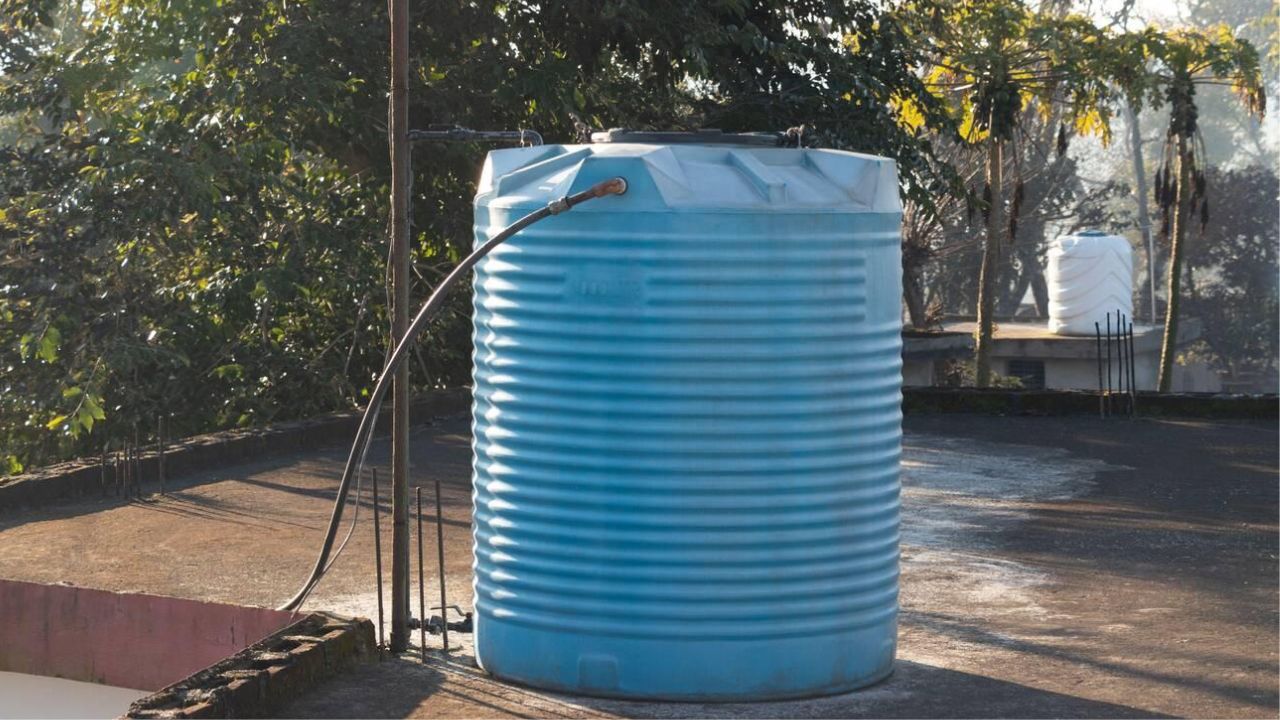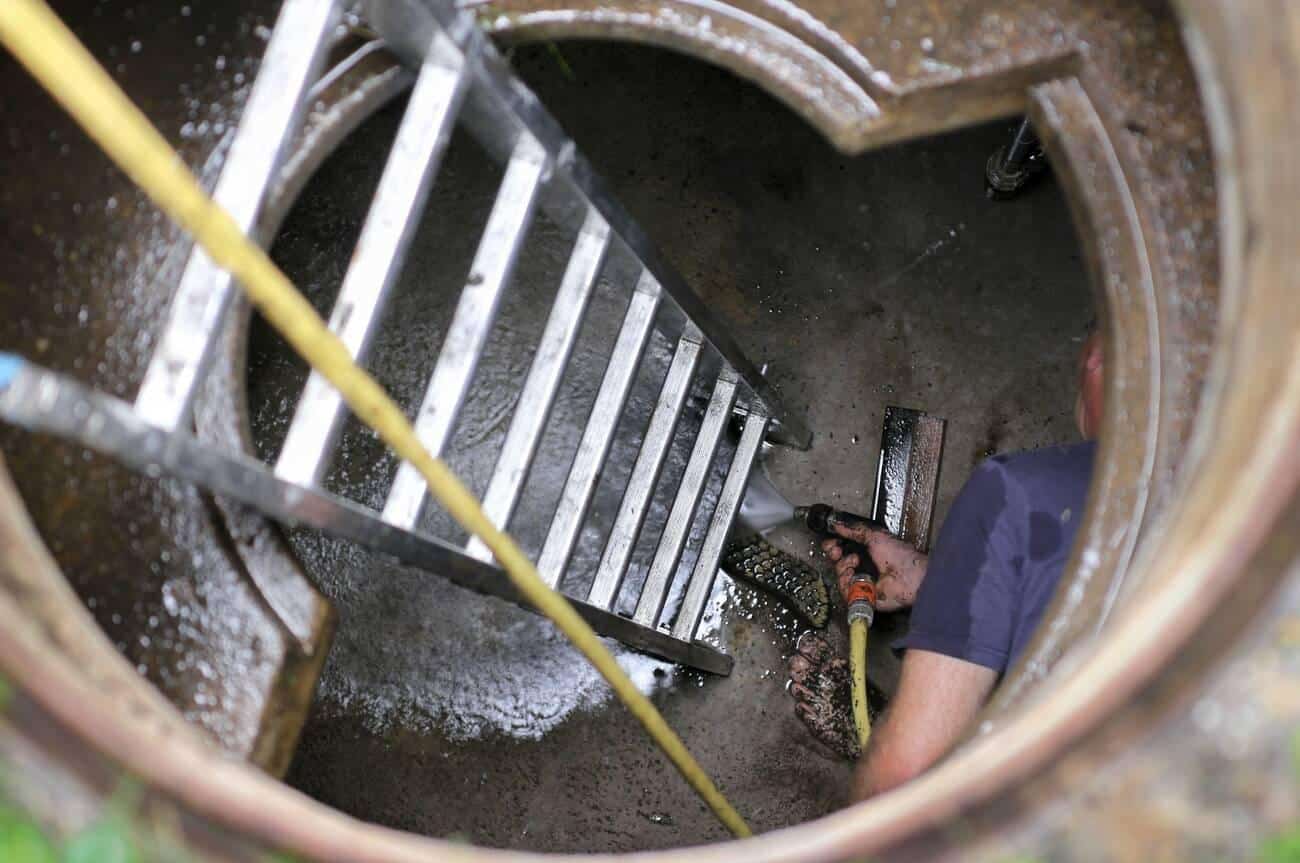We must know the Complete Water Tank Cleaning Guide because we store and deliver household water supplies for drinking, cooking, bathing and cleaning purposes.
However, over time, sediments, algae, bacteria and mineral buildup accumulate, degrading quality and even posing health hazards without occasional thorough cleaning. By implementing the best methods for scrubbing away grime to protect families from accessing cleaner water daily, storage tanks and plumbing systems both benefit long-term.
Content Highlights
- Draining, scrubbing and disinfecting kill bacteria and remove sediment buildup.
- Cleaning equipment differs based on tank construction constraints, like entry ports.
- Specialty chemical cleaners certified for drinking water are safe to dissolve minerals and grime; flushing alone cannot.
- Preventative UV systems, routine output flushing and repaired seals minimize contamination rates, increasing cleaning intervals.
- Testing often confirms water safety for household use after cleaning restoration, rather than assuming based on appearance and scent alone.
Give family health the greatest protection by committing to annual water tank system cleaning. Utilize professional services already outfitted with ideal cleaning solutions and liability assurances; water restored proves safe at the tap for home use after treatment.
Importance of Water Tank Cleaning
While city-supplied water lines receive treatment, eliminating contaminants initially, residential water tanks store additional gallons for home use, depending on source and residence size. Without sufficient tank cleaning and maintenance, the Environmental Protection Agency (EPA) warns that stagnant water promotes:
- Bacteria Growth: Pinhole leaks, condensation and cap venting introduce microbes that multiply over months before annual cleaning.
- Algae/Mold Buildup: Sunlight exposure through translucent plastic tanks fuels organic overgrowth on interior surfaces.
- Sediment Accumulation: Rust, sand, silt and corrosion metal flakes settling at tank bottoms require periodic draining and scrubbing removal.
- Mineral Deposits/Biofilm: Calcium, lime and sodium salts precipitate over time as hard water leftovers if not addressed.
Implementing cleaning best practices and supplementary disinfecting methods ensures fewer impurities enter home plumbing lines, so water quality and safety at the tap improve, especially important for families with children or immunocompromised members who are more vulnerable to contaminants.
Water Tank Type Cleaning Differences
Approaches for cleaning various water tank materials and capacity sizes differ based on individual system layouts. Common options include:
Plastic poly tanks
Ranging smaller volumes below 5000 liters, lightweight polyethylene plastic modular tanks assemble easily by homeowners outdoors but require caulking seal maintenance to prevent exterior rust and leaks introducing bacteria. Annual cleaning involves:
- Draining and Scrubbing: Opening exterior panels exposes all interior surface areas for removing silt and biofilm layers settled over months through draining and manual brush scrubbing aided by cleaners suited for drinking water safety.
- Sun Drying: During warm seasons, ultraviolet rays damage remaining organisms when tanks disassemble for a couple days.
- Refilling to Overflow: This blasts silt from output hoses while still unsealed, allowing debris to be expelled and restoring flow. Add disinfectant through vents before resealing outlet piping and panels.
Concrete Cisterns
Larger fixed volumes poured onsite require interior access through built-in entry hatches or removable tops. Clean multiple years of silt and algae buildup by:
- Pressure Washing: Industrial washers with drinking-safe detergents fitted through top openings scour walls down to base level, where sump pumps drain out loosened sediments.
- Flood Flushing: Inserting clean water hoses fills tanks completely to overflowing heights, while workers inside use long-handled brushes to manually agitate stuck-on organics for pumping removal.
- Disinfection: chlorinating internal air space fumes and chamber flooding eliminate remaining microbes. Rinse away cleaner residues completely post-cleaning.
Galvanized steel/iron tanks
Metal construction endures longer but requires additional corrosion and rust safeguards to minimize particulate flakes contaminating water using tips like:
- Sacrificial Anodes: Replacing magnesium or aluminum rod inserts attracts corrosive electrolytic reactions instead of eating away at tank walls. Helps older systems.
- Interior Coatings: Specialized tank interior epoxy or ceramic layer coatings protect underlying steel surfaces from oxidation and rust accumulation, keeping stored water cleaner.
- Annual Flushing: Opening bottom or side output valves monthly flushes some sedimented grit, but at least annual drain and scrub cleanings are still needed to fully remove minerals and grime from all surfaces and joints.
Consider the reservoir location and surrounding tree overhang or dirt buildup contributing to frequent exterior deterioration, requiring mitigation and accelerating wear without proper maintenance.
Cleaning Equipment/Solutions
Specialized draining, flushing, scrubbing, pressure washing and disinfection equipment combats unique water tank cleaning challenges depending on fixed capacities and interior construction limitations.
Tank Entry Equipment
Larger concrete or metal tanks fitted with hinged tops or human entry ports accommodate:
- Scaffolds: Custom-built movable platforms provide full wall access without ladders marking stainless steel.
- Lift Platforms: A hydraulic man lifts and positions cleaners safely, working from top to bottom through entry hatches.
- Remote Operated Vehicles: Small robotic vehicles equipped with brushes, cameras and tank-safe disinfectants navigate confined spaces with pre-programmed efficiency.
- Protective Wear: Hazmat-style impervious suits, gloves, respirators and vented masks protect workers from contaminated water during cleaning and microbial fumes.
Specialized Cleaning Solutions
Chemical options certified safe for potable water equipment degrade and dissolve minerals suited to drinking infrastructure, like:
- Citric or Muriatic Acid: Removes built-up calcium or lime deposits or iron staining.
- buffered phosphoric acid: it descales plaque and corrosion more gently than muriatic acid, avoiding metal damage.
- Sodium Hypochlorite or Hydrogen Peroxide: Oxidizing agents kill bacteria, mold and algae instead of toxic chlorine washes.
Tools like telescoping poles or powered water-fed brushes outfitted with pressure-regulated tanks apply solutions effectively, then rinse away residues completely from floors upwards, preventing cross-contamination drips. Confirm all equipment and chemical safety before attempting DIY tank washing rather than hiring professional services experienced in restoring water quality, especially for elderly, children or immunocompromised households at higher risk of being supplied from improperly cleaned cisterns.
Water Testing
While clean odors, tastes and visible sediment provide clues on water quality, laboratories analyze samples conclusively, identifying types and concentrations of contaminants still present and verifying the efficacy of cleaning methods before households utilize water post-cleaning. Testing checks key markers like:
- Bacteria Levels: Total coliforms and E. coli indicating raw sewage leaks or animal feces entering systems require immediate correction.
- Turbidity and Chlorine: Cloudiness and disinfectant residuals ensure sediment filters are working and distributed chlorine levels adequately combat microbes without overloading.
- Mineral Concentrations: Hardness, iron, manganese and sulfates influence stain or scale potential, which can be addressed by adjusting cleaning approaches and completely removing buildup.
- Organics: Total organic carbons impact disinfection byproducts, requiring treatment process adjustments to supply water management.
Confirm tanks, filters and softeners are optimizing water quality after addressing cleaning deficiencies, allowing families to utilize resources safely. Adjust maintenance schedules based on use patterns and test results.
Preventative Care
While intensive system draining, pressurized cleaning and disinfection effectively revive fouled tanks and plumbing periodically, implement supplementary maintenance to improve treatment longevity. Consider installing:
- Pre-Filters and Water Softeners: Multi-barrier filtrations trap silt, sediments and minerals in earlier components before entering storage and distribution, preventing scale adherence to tank walls later.
- Annual Inspections: Early leak detection minimizes external rust and pinhole repairs, turning minor expenses into major future expenses and contamination sources if neglected, allowing deterioration.
- Quarterly Flushing: Seasonally draining several tank gallons from the bottom silt faucet outlet removes some sediment buildup more regularly than relying solely on overflow topping off disturbing little settled grime by comparison annually.
- UV Light Treatments: Sterilizing upper water levels with ultraviolet lamp installations averaging under $150 disinfects microbe content between manual scrubbing sessions for cleaner supply delivered downstream, protecting family health.
Commit preventing tank contamination in the first place rather than repeatedly intensive corrective cleaning efforts. Users benefit from higher water quality grades at the tap by implementing a diligent maintenance plan.
Conclusion
Water tanks provide supplemental household supply reserves, delivering liquid essentials and protecting family health and sanitation daily. But neglecting occasional intensive draining, scrubbing and disinfecting tank interiors allows gradual sediments, bacteria films and minerals to accumulate and flow through home plumbing systems, risking illness that vulnerable community members cannot fight off readily. By understanding tank construction differences and utilizing specialty chemical cleaners with equipment suited for safely removing grime down to the flooring, homeowners ensure healthier water utilization every tap turn rather than guessing quality safety blindly between neglected treatment sessions. Confirm cleaning efficacy by analyzing samples after inspecting repairs needed to prevent exterior contamination from accelerating system deterioration going forward. Protect your household and implement a routine water tank cleaning maintenance plan going forward.
FAQs
How often should water tank cleaning occur?
Water tanks should undergo cleaning every 12 months, or 6 months in warmer climates. More frequent 2-3-month inspections identify potential leaks or rust buildup-catching repairs when simpler restoring quality.
What are signs my water tank needs cleaning?
Visible interior grime, foul tastes or odors, audible sediments if metal construction, testing confirming bacteria levels above safety guidelines, or families reporting stomach upsets drinking supplied water indicate cleaning is overdue.
Can I clean the water tank myself safely?
While smaller above-ground plastic tanks may be suitable for DIY cleaning using proper draining, scrubbing and disinfection methods before refilling, larger fixed concrete or enclosed metal tanks warrant hiring professional cleaning services already outfitted with specialty chemicals, protective equipment and liability coverage to ensure household water quality and safety given contamination risks.
How much does water tank cleaning cost?
Basic water tank cleaning costs range from $150 to $300 for smaller above-ground tanks, up to $1000+ for full professional cleaning of commercial-sized underground concrete reservoirs, factoring in liability, crews, equipment, disposal fees and specialty cleaning solutions used internally.
What steps prevent rapid water tank contamination between cleanings?
Pre-filtration systems, annual inspections and output flushing four times a year slow sediment buildup. UV lights disinfect contents, minimizing the formation of bacteria and slime in untouched areas. And maintaining exterior seals prevents external corrosion and leaks, introducing microbes through cracks otherwise.














































